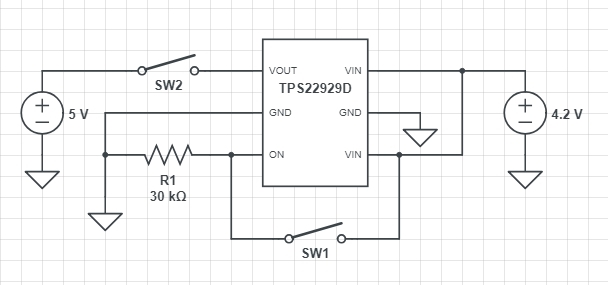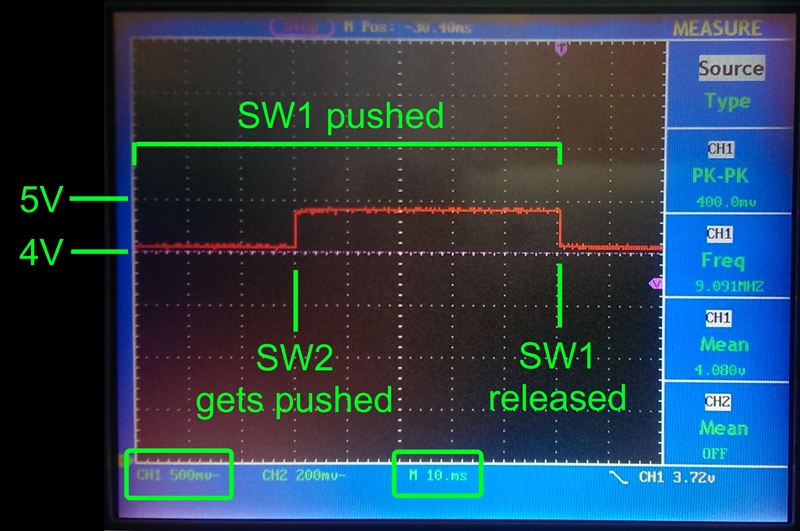Other Parts Discussed in Thread: TPS22917
Hello,
testing the TPS22929D Load Switch I found out that when I permanently connect the ON-pin to VIN (circuit is as shown in the datasheet with caps. etc.) the reverse-voltage protection doesn't work.
VIN is connected to a Li-Ion 3.7V battery pack. When I connect a 5V power supply to VOUT the voltage on VIN is higher than before. Connecting ON to GND or dis- and reconnecting ON to VIN after the problem occurs the IC works as intended and VIN is as expected. So the issue only exists when ON is already connected to VIN when the 5V are applied.
What could cause this issue and is there a workaround?
With kind regards,
Daniel Ulrich




